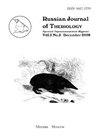Using ISSR markers in determination of genetic relationship between 2n = 54 and 2n = 60 cytotypes of Nannospalax xanthodon (Nordmann, 1840) (Mammalia, Rodentia) from Central Anatolia
IF 0.6
4区 生物学
Q4 ZOOLOGY
引用次数: 1
Abstract
A total of 36 samples of 2n = 54 and 2n = 60 cytotypes of Nannospalax xanthodon, distributed in the Central Anatolia region of Turkey, were analyzed for the first time by using inter-simple sequence repeat-polymerase chain reaction (ISSR-PCR) technique. The analysis revealed 112 ISSR bands, 101 of which were polymorphic. Seven ISSR primers ((AG)8 T, (GGAGA)5, (GACA)4, (TG)8 A, (CAG)5 GC, (CAG)4 AC and (GA)8 AC)) were optimized from total 20 primers. (AG)8 T and (GA)8 AC primers were most informative to distinguish cytotypes by producing specific bands for 2n = 54 and 2n = 60. The cytotypes in genetically close relationships were separated into three different groups by UPGMA cluster analysis, in which, the highest genetic diversity was measured for 2n = 60. Our results showed that ISSR markers can be used as a simple and reliable molecular tool, for the estimation of genetic diversity in cytotypes of Nannospalax at low range genetic distances. How to cite this article: Ya c T., Șen E., Gurbanov R.R. 2018. Using ISSR markers in determination of genetic relationship between 2n = 54 and 2n = 60 cytotypes of Nannospalax xanthodon (Nordmann, 1840) (Mammalia, Rodentia) from Central Anatolia // Russian J. Theriol. Vol.17. No.2. P.100–107. doi: 10.15298/ rusjtheriol.17.2.06利用ISSR标记测定了中南安纳托利亚Nannospalax xanthodon (Nordmann, 1840)(哺乳类,啮齿目)2n = 54和2n = 60细胞型的亲缘关系
首次采用ISSR-PCR技术对分布在土耳其中部安纳托利亚地区的36个黄颡鱼2n=54和2n=60细胞型的样品进行了分析。分析发现112条ISSR谱带,其中101条具有多态性。从总共20个引物中筛选出7个ISSR引物((AG)8T、(GGAGA)5、(GACA)4、(TG)8A、(CAG)5GC、(CAG)4AC和(GA)8C)。(AG)8T和(GA)8AC引物通过产生2n=54和2n=60的特异性条带来区分细胞类型。通过UPGMA聚类分析,将亲缘关系密切的细胞类型分为三组,其中2n=60的遗传多样性最高。我们的结果表明,ISSR标记可以作为一种简单可靠的分子工具,用于在低范围遗传距离下估计Nannospalax细胞类型的遗传多样性。如何引用这篇文章:Ya c T.,Șen E.,Gurbanov R.R.2018。利用ISSR标记测定来自安纳托利亚中部的Nannospalax xanthodon(Nordmann,1840)(哺乳动物,啮齿类)2n=54和2n=60细胞型之间的遗传关系//俄罗斯J.Theriol。第17卷第2期。P.100–107.doi:10.15298/rusjheriol.17.2.06
本文章由计算机程序翻译,如有差异,请以英文原文为准。
求助全文
约1分钟内获得全文
求助全文
来源期刊

Russian Journal of Theriology
Agricultural and Biological Sciences-Animal Science and Zoology
CiteScore
0.90
自引率
33.30%
发文量
0
期刊介绍:
The Russian Journal of Theriology publishes papers on all aspects of mammalian biology: taxonomy, zoogeography, ecology, behavior, morphology, development, physiology, paleontology, and evolution. Studies of extinct as well as extant taxa are included. Reviews are also published; these may be invited by the Editorial Board.
 求助内容:
求助内容: 应助结果提醒方式:
应助结果提醒方式:


